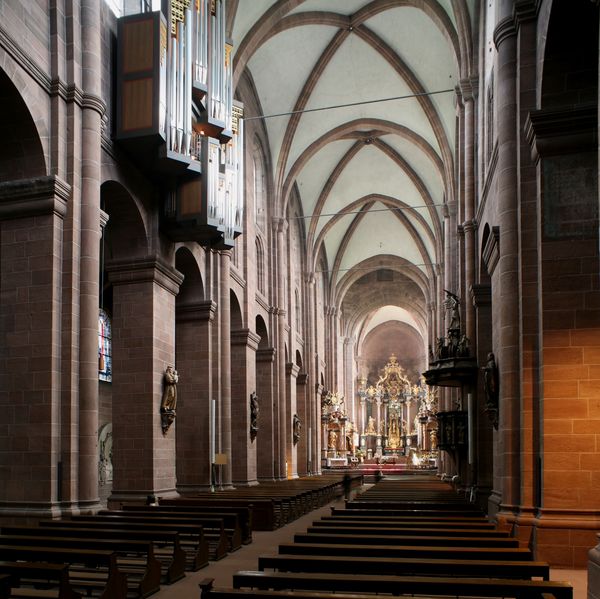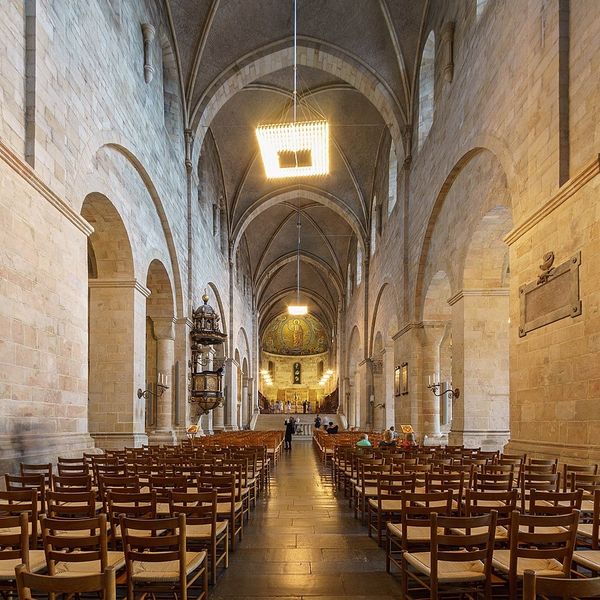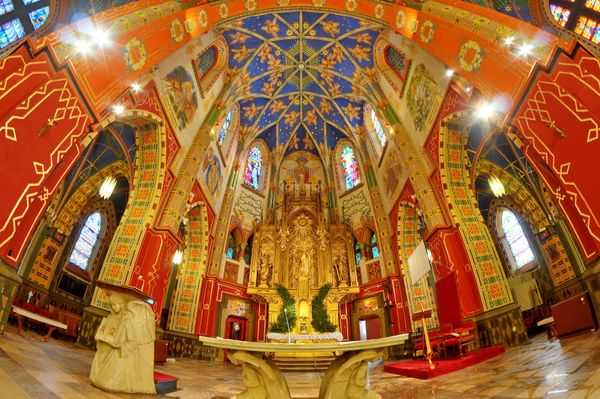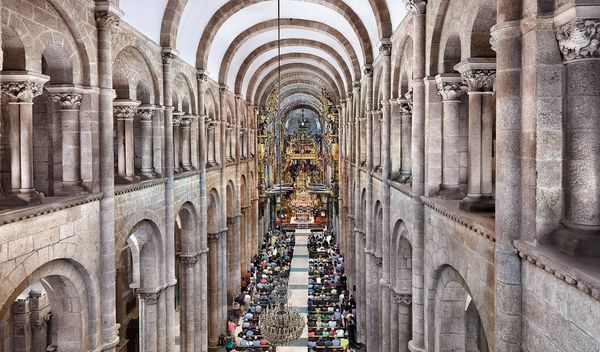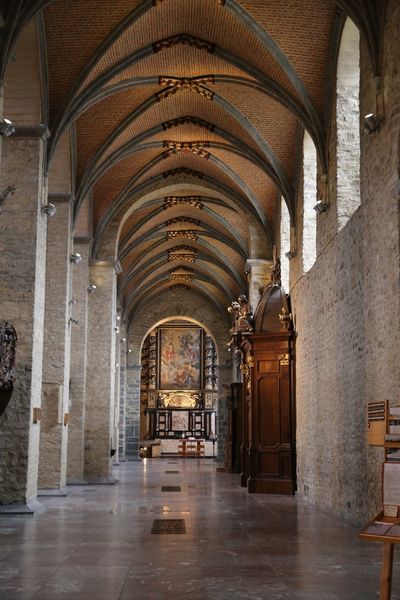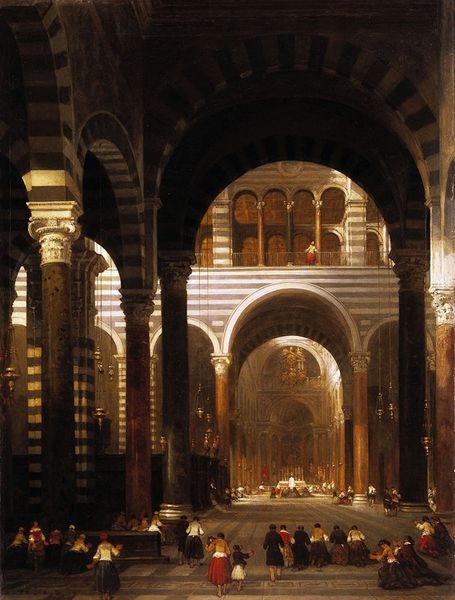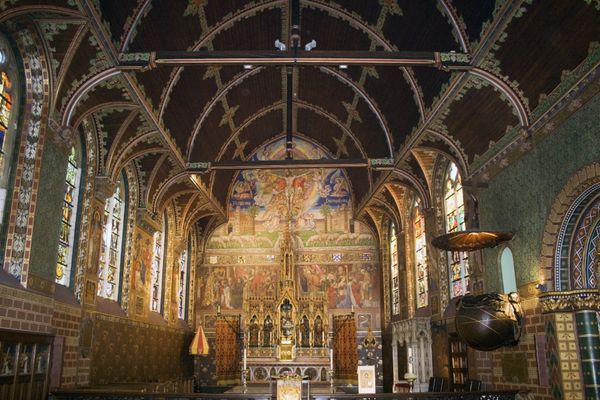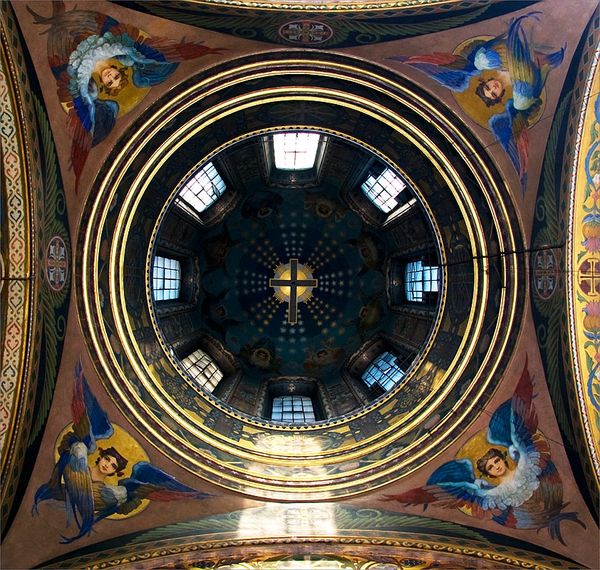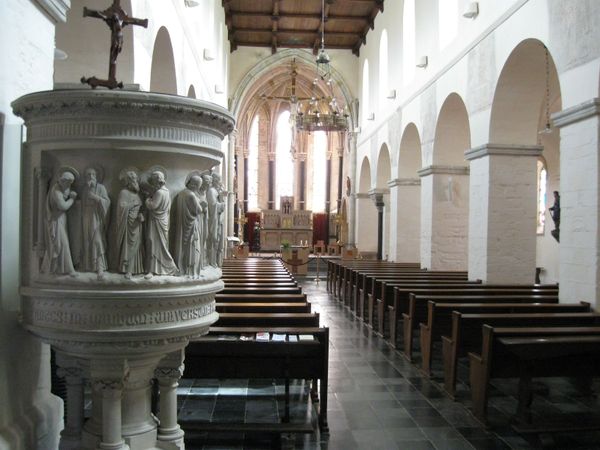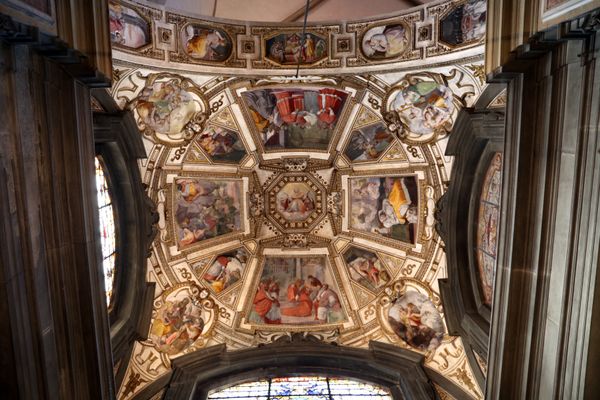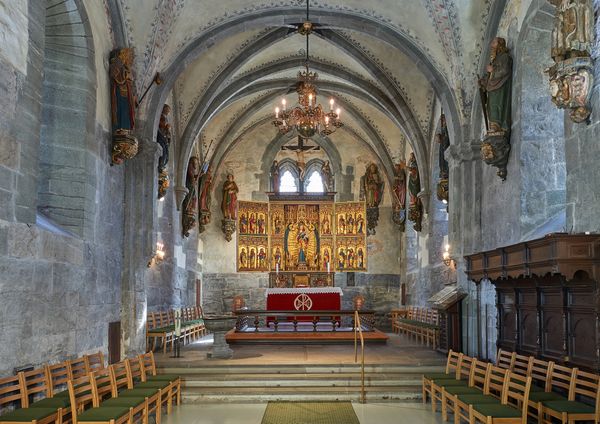
tempera, fresco, marble, architecture
#
medieval
#
tempera
#
landscape
#
holy-places
#
historic architecture
#
fresco
#
traditional architecture
#
romanesque
#
architecture
#
history-painting
#
marble
#
italian-renaissance
#
architecture
#
historical building
Copyright: Public domain
Curator: Welcome. Here we have Filippo Brunelleschi’s San Lorenzo in Florence, dating back to 1419, primarily constructed using marble and fresco. Editor: It exudes such a cool and austere monumentality. The gray stone, the repetitive arches... it almost feels like a vast, silent machine, an impressive container for something profound. Curator: The fascinating aspect for me is Brunelleschi’s deliberate break from Gothic excess. The modular design speaks volumes about rationalisation and efficiency in the production of space. Consider the crafting and placement of each column, each capital—the work of so many hands, towards this unified architectural expression. Editor: Indeed. And within that organized space, we find a complex play of symbols. The coffers in the ceiling, for instance. Their geometric precision feels almost mathematical, perhaps mirroring a divine order, or a Renaissance era love of mathematics and perspective? Curator: Precisely! These elements are pre-fabricated; that shows a commitment to replication to hasten assembly time. It embodies early standardization of parts. It's about applying logical construction principles beyond just aesthetic considerations. Editor: It's about making the symbolic material, isn't it? Transforming abstract ideas of divinity and order into something tangible and permanent. Every arch, every carefully placed detail feels laden with significance, built on top of Roman ideals of measure and scale. Curator: It reminds me of Roman construction strategies - an early version of mass production meets sacred space. Editor: And how fascinating that we are still parsing these signals, centuries later. These arches, the way they speak about solidity but still suggest infinite, connected worlds... the psychological resonance of those forms, I think, remains undiminished. Curator: In summary, a testament to human ingenuity. Not just from an aesthetic perspective, but as a demonstration of material efficiency and construction processes as artistic mediums. Editor: Yes, a place of resonant forms, echoing human dreams and their own cultural legacies through marble and fresco.
Comments
No comments
Be the first to comment and join the conversation on the ultimate creative platform.
